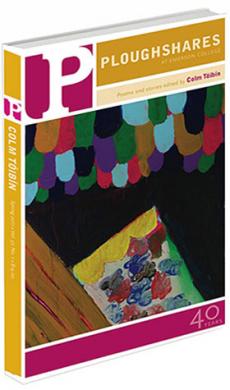Review: Captive Voices: New and Selected Poems, 1960-2008
When Eleanor Ross Taylor received the Poetry Foundation’s prestigious Ruth Lilly prize in 2010, Christian Wiman predicted most readers would be unfamiliar with her work. Indeed, although Taylor has been writing startlingly original, commanding poems for decades, the announcement of the prize was met in my household with “Eleanor Ross who?” Luckily, this new and selected volume should serve to introduce Taylor’s poetry to the wide audience it deserves.
Presenting poems from five previous collections, as well as a generous selection of new work, Captive Voices shows that Taylor possesses what all good poets should have: a distinct voice that can accommodate great variation. The poems in the collection are wide-ranging—Taylor inhabits personae as diverse as Florence Nightingale and a guard on a chain gang; and her dramatic monologues, portraits, and elegies move from muscular, perfectly measured lines, such as “The battered bees hung stupid in mid-air” to free verse, like “morning mtns & / interstitial deer” and back again. Yet all are unmistakably Taylor poems, sharing the same authority, musicality, and tensions, as well as similar concerns about history, family, and place.
The title, while drawn from one of the poems, applies to the work as a whole: Captive Voices is populated by characters and disembodied voices, many of which speak from or against some literal or metaphorical captivity. Thus we find historical figures like Rachel Plummer, nineteenth-century prisoner of the Comanches, alongside spiritual captives, such as the artist bound by her art or the woman held captive by societal expectations. This last is a recurring theme. In “How to Live in a Trap,” for example, the speaker’s tongue-in-cheek instructions (“Refrain from gnawing…” “Lick wounds regularly”) conclude, “Tell yourself there’s a painting / in this somewhere: / Interior, Woman Singing.”
With pervasive irony, inventive wordplay, and surprising metaphors (a littered hot dog carton tossed by the wind becomes “a little casket”), Taylor says a great deal in small spaces, but there is always the sense of more left unsaid, as though the poems themselves are held captive by their concise forms. (The widow of novelist Peter Taylor, Taylor began her own career writing stories but, facing the demands of motherhood and marriage, chose poetry as a less time-intensive craft.) These nuanced poems demand work on the part of the reader, requiring us to piece together back-stories and fill in details, and they yield more with every rereading.
Taylor repeatedly acknowledges her deliberate obliqueness— “Contrary to belief, the word diary / means undivulged; clues trail / the pages and the trail breaks off…” (“The Diary”). While the complete story is not always clear, there is a clarity of intention, a sense of the fierce intellect at work crafting the lines, choosing what to reveal. In “Long-Dreaded Event Takes Place,” the speaker imagines herself a painter watching a tragedy, “pretending I recede”: “everything establishes / my absence in this scene / later somewhere / I’ll paint-in gaps / fill in the larger picture, / withholdings spilled / out of my pockets of resistance—.” This self-imposed distance allows Taylor to capture intense emotion, whether grief or rage, with chilling precision. Consider the power and control of the lines that conclude “Where Somebody Died,” when all that is left is “The brute truck / over the interstate. / The flames in the incinerator / chewing his old vests.”
There’s nothing new about a poet using opposing forces to create tensions (see Blake), but Taylor employs opposition to greater effect than most. She juxtaposes a plain-spoken, regional diction against coined phrases, assonance and consonance, and scattered rhymes, so that the poems strike an odd, at times disharmonious balance between artifice and natural speech. Similar tensions exist between disclosure and concealment, expansion and compression, free and metrical verse, and the narrative and lyric.
While the collection is strong from the start, Taylor’s poetic craft deepens over time, and her newer poems (“newer” meaning the past 20 years or so), largely preoccupied with aging and mortality, are particularly striking. Here the personae have been largely replaced with a more personal (though still reticent) I. Possessing all of the wit, wordplay, music, and high tension of her earlier poems, these poems are more intimate and among her most resonant. Take the opening lines of “Ancestral,” the final poem in the book: “Of course, we’ll follow. / Did you say horse? or hearse? No matter. / They’re far ahead. They started early, / shoe buckles, stovepipe hats. / / What’s triter than hooves’ clatter? / Is dead silence worse?” The poem goes leaping on, in love with word, sound, idea. And, of course, we follow.

